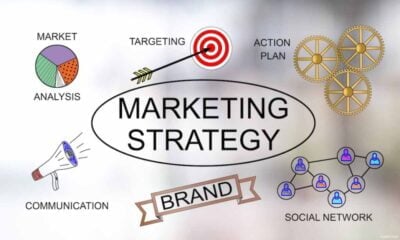Management
Does your business have a User’s Manual?
Excerpt from Business Mechanics, a book for all small business owners by Jerome Jacobs. What you will learn in this chapter – What kinds of things you can (and should) systematise. – How to go about systematising your business. – The importance of evolving your systems as your business changes and grows.
Excerpt from Business Mechanics, a book for all small business owners by Jerome Jacobs
What you will learn in this chapter:
* What kinds of things you can (and should) systematise.
* How to go about systematising your business.
* The importance of evolving your systems as your business changes and grows.
Systematise the routine tasks
A vehicle needs its engine and chassis to be kept in good working order if it’s going to reach its destination safely. That’s why new cars are sold with a User’s Manual; this tells the owner how to perform key maintenance tasks.
Unfortunately businesses don’t come with a ready-made User’s Manual: you need to write your own! This might seem onerous, but if you’re serious about keeping the wheels turning (profitably), it’s a must.
Imagine if every time you had to service your car you had to figure it out from scratch. That would be pretty time-consuming, right? It makes sense to document such a routine task.
The same thing applies in your business: taking a little bit of time up front to document routine tasks is a huge time-saver in the long run. It makes the routine task so much easier to implement by your team.
Effective systems can save you and your team both time and money. By ‘system’ we’re not talking about computer systems or programmes. No, this kind of ‘system’ is about the various tasks required in running a business – but doing those tasks in an organised, planned and coordinated manner.
Carrying out tasks in a planned way means that things are done consistently, regardless of the team member who’s carrying out the tasks. This makes it easy for new team members to get up to speed quickly in their role. Systems exist to help with routine tasks. Of course, not all tasks in a business are routine.
So anything that can’t be systematised (because it’s not a routine task) will need a greater degree of human involvement.
But by identifying what can be systematised, you’ll be using your human resources far more efficiently. The alternative to systematisation? That would involve employing more people, i.e. taking on more overheads and reducing your profit.
Remember…
* Systems run your business: as the business owner, you have invested in the system.
* People run your systems: it’s up to you to choose the people who implement these systems.
* You lead your people: it’s your vehicle… so drive it well!
What kinds of tasks can be systematised?
The following pages will give you an idea of what kinds of tasks can be systematised.
Of course, not all processes will be relevant to all business types – and there could be something really crucial that isn’t listed here.
It’s up to you to brainstorm what’s important, these are just ideas to help you get started.
Office and admin systems
• Answering the telephone: does everyone answer the phone in the same way?
• How do you deal with receiving and opening the mail?
• Purchasing and maintaining office supplies and equipment.
• Faxing and emailing: are stationery templates being used? Are there policies on email use?
• Dealing with incoming and outgoing goods.
• Backing up and archiving data, and checking that the back up data is complete and functional.
New product development systems
• Developing new products and seeking legal protection from them.
• Developing and protecting intellectual property.
• Developing packaging and collateral material, such as catalogues and sales aids.
• Developing manufacturing methods and processes.
• Systems for manufacturing and inventory control
• Selecting vendors, including a tendering process.
• Determining product or service warranties offered.
• Establish product or service pricing and margin levels, with retail and wholesale pricing.
• Establishing an inventory re-order process and establishing minimum and maximum inventory levels.
• Reconciling physical inventory with accounting records, i.e. stocktaking processes and procedures.
Processing and tracking orders
• Taking orders by mail, fax, phone or online.
• Logging the order and customer details in a computer system.
• Fulfilling and packaging the orders.
• Confirming the order and shipping details before delivery.
• Sending the orders, including a management system for freight,
• couriers and vehicles.
• Order tracking systems for shipments.
Invoicing and accounting
• Invoicing customers for the orders.
• Receiving payments for the orders and crediting customers for
• payment (whether cash, cheque or credit card).
• Monitoring credit control and age of accounts.
• Starting the collection process for outstanding receivables.
• Purchasing procedures and approvals required for Purchase Orders.
• Payment process for supplies and inventory.
• Petty cash procedures.
• Managing the accounting process with daily, weekly, monthly, quarterly and annual reports. Including cash flow statements, balance sheets and profit and loss accounts.
• Processes to ensure that monthly and yearly budgets are logged and that targets are met.
• Reviewing borrowing needs: are they secured and available?
• Tax procedures and payments to Inland Revenue. Includes reporting payroll taxes, sales tax, superannuation and withholding payments.
• Complete a weekly bank reconciliation and having a daily banking system.
• Maintaining an asset register including depreciation values.
Customer service
• Returns procedures: for inventory and customer orders.
• Logging and responding to customer complaints.
• Replacing defective products or performing other warranty service obligations.
• Measure quality and professionalism of service delivery.
• Customer feedback systems and measures.
Sales and marketing
• Negotiating, drafting and executing client contracts.
• Creating a strategic marketing plan and processes for identifying key marketing strategies to follow.
• Ensuring that a consistent brand message is communicated, with corporate usage guidelines for branding.
• Designing and producing promotional materials, printed and online.
• Developing sales leads and prospects.
• Creating an advertising plan, including setting goals, KPIs and budgets.
• Creating a public relations plan, including setting goals, KPIs and budgets.
• Creating a direct mail plan, including setting goals, KPIs and budgets.
• Developing and maintaining a customer database, and systems for communicating with your existing clients.
• Developing and maintaining a website.
• Analysing and tracking sales statistics:
• Continuously measure number and origin of all leads
• Measure conversion rate for each salesperson
• Measure your average dollar sale for every team member
• Keep a record of your profit margins.
Human resources
• Recruitment procedures, including job descriptions, position descriptions and recruitment methods and scripts.
• Training employees: initial induction programme and on-going training and development.
• Payroll process and frequency of payments.
• Systems for planning and managing leave, e.g. annual leave, sick leave, compassionate leave, etc.
• Career planning, performance reviews and pay reviews.
• Company vision and mission statement and culture.
• Company and individual team member goals and performance indicators.
• Conflict resolution and disciplinary procedures.
• Contingency staffing plans.
• Redundancy systems.
• Health and safety procedures and requirements, including emergency and evacuation procedures.
General operational systems
• Managing insurance needs and ensuring adequate coverage levels.
• Managing and storing records (paper records and computer data).
• Maintenance of equipment, including premises, plant, office, warehousing, computers, etc.
• Maintaining investor and shareholder relations.
• Information flow processes: internal and external.
• Ensuring legal security.
• Developing a business plan for planning and managing growth.
• Maintaining and designing telephone and electrical systems. Maintaining and upgrading office equipment.
• Planning permits and fees.
• Ensuring physical security of premises and people.
Seven steps to systematisation…
1. Identify all your processes. What are you doing on a regular basis that a lower-paid team member could be doing if it were systematised? Or is there anything in your business you hate doing, and would love to hand over to someone else?
This could involve any task, be it admin, sales, marketing, financial or operational in nature. Use the lists earlier in this chapter to identify all the different processes in your business.
2. Prioritise the processes to systematise. In most cases, it won’t be feasible to systematise every process in the business at once.
In that case, it makes sense to review the list of processes you’ve written and identify the priority tasks to systematise.
3. Flowchart your processes. This involves identifying each major step of the processes you’ve identified, and in which order these tasks happen. By putting this into a flowchart diagram, you’ll see how it all fits together in a very visual way. Don’t worry about going into too much detail at this stage, just write down the key steps.
A company manual makes it easy for anyone to join your business and get to work right away.
4. Document how it gets done. This is the detailed stage. Get the team member who is currently doing the job to write down every step in performing the task.
5. Test the documented steps. The person who’s written the steps in performing a task should then get a colleague to follow their instructions to see if they can do the job. If this colleague has to ask any questions, the team member who wrote the tasks initially should add these steps to the document. The idea is that a person totally new to the job can follow the written instructions without needing extra help or assistance.
6. Measure using key performance indicators (KPIs). Typically, these KPIs will be the top five measures that show system performance. These KPIs will relate directly to the KPIs of the person doing that role. For example, if it’s a sales process, KPIs might include number of leads; number of sales; average sales value; sales conversion rate, and so on.
7. Allow the system to change and grow. Any systems documentation needs to be a ‘living’ document, i.e. it should grow and evolve with the business. After all, things like computer programmes are always changing, so it follows that any system or process might need to change too. It’s up to you to ensure that your staff always keep the process up-to-date. Essentially, it is your responsibility to make sure that the systems are (a) being implemented, and (b) are relevant to the business.
Some final tips on systematisation
* Place someone in charge of the systematisation project. Start to flow chart the simple areas first.
* Don’t over complicate systems or people won’t follow them.
* Use lots of photos, videos, screen shots etc. with the description. This may be as simple as taking a computer screen capture or videoing someone doing the task. This will make the systems much easier to follow.
* Document your system in a policies and procedures or operations manual in an easy to access format. And make sure everyone knows where it is and references it regularly!
* Remember that your processes will need to evolve with your business: if not, the process won’t get used by your staff, and they’ll start improvising, and you’ll be back to Square One. Make sure that regular system upgrades are planned and documented in your corporate calendar.
You will be amazed at the improvements in your business when you start to implement systems and procedures.
What’s more, if you intend to sell your business in the future, you’ll be adding a lot of value by having all your processes systematised and documented as it will make life so much easier for the new business owner.
Key points from this chapter
* What kinds of things you can (and should) systematise.
* How to go about systematising your business.
* The importance of evolving your systems as your business changes and grows.









